8 Best Project Management Software for Designers in 2025: Key Features for Freelancers & Others
Project management software is essential when working with clients and multiple collaborators in a creative field like design. But how do you find the best project management software for designers? Read our handy guide to the top eight software platforms you can use today to manage your designing needs.
Designers are among the most independent and self-starting of all creative professionals, but that doesn’t mean they don’t need good project management software. The ability to keep a project organized can be the difference between a great designer and one who’s merely good. That’s why our experts have gathered a list of the best project management software for designers.
As designers, you may have a lot of complex projects going on at once. Managing all of that can be overwhelming and time consuming. That’s where project management software comes in. It helps you keep track of multiple projects while giving you the option to delegate different tasks to different people, monitor your progress and stay organized.
With so many options out there, it can be hard to choose the one that’s right for you. Don’t worry — after reviewing dozens of project management tools, we’ve put together a list of the top eight you can get started with today. monday.com takes the top spot, but there are plenty of options here to choose from. Check out our best project management software roundup for a broader look at our experts’ favorites.
-
04/03/2025 Facts checked
We added new features and information for several providers, such as monday.com, Wrike, Trello and Asana.
Best Project Manager Software for Creative Teams & Designers
- 1
- 2
- 3$10 / month(All Plans)
- 4
- 5$15 / month(All Plans)
- 6
- 7
- 8
What Makes the Best Project Management Software for Designers?
The best project management software for designers must provide solid organization and collaboration tools that allow team members to share, comment on and iterate designs directly within the platform, all for a reasonable price. Our experts considered these features and more to find the five best services for you.
Designers work with clients with visions of their own, which means that the designer has to be able to understand exactly what the client wants and deliver it that way. Finding project management software for creative agencies and designers that suits this purpose is the first step.
The first thing our experts look for in project management software for designers is that it provides great organization tools. The designer needs to be able to lay out all their materials in a way that lets them move everything around per the needs of the client. The designer also needs to be able to see every single change as it happens.
It should also allow for collaboration between people who don’t work at the same physical location. The software must be able to separate projects into accounts for each client so that you can keep track of multiple projects as well. Design projects can also have a long list of issues that need to be resolved along the way, so an issue tracker can help you monitor them all in one place.
Features like checklists and file comments are also handy. Some software allows you to assign tasks and comments to different members of your team, and even upload photos related to the checklist item from your computer or phone. They’re also useful for highlighting areas that need improvement, such as when a client asks for revisions. It’s easier for team members to see exactly what needs changing if there are comments on that specific file.
For freelance designers who bill by the hour, robust time tracking functionality is essential. The best platforms offer built-in timers that can be started directly from task cards, automatic time logging for different design phases, and the ability to generate professional time reports that can be directly attached to client invoices.
With these criteria in mind, our top five choices are monday.com, Hive, Wrike, Asana and Basecamp. They all offer different toolsets and come with paid plans for freelance designers on a budget.
The 8 Best Project Management Software for Creative Agencies and Designers
How do you choose the right kind of software for your own needs? It’s not enough to ask what everyone else is using; you have to figure out what will be most helpful in your own work environment. Here are our top recommendations for design project management software you can use today.
1. monday.com
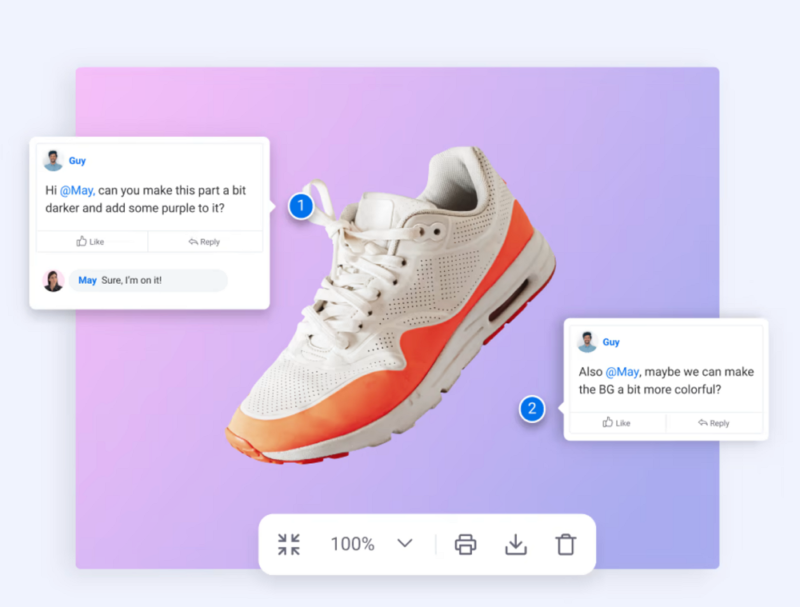
to stay on top of their project management needs.
More details about monday.com:
- Pricing: Free plan available with up to 2 seats; Basic plan for $9 per month (one-year plan)
- Provider website: monday.com
Pros:
- Easy to use
- Designer friendly features
- Secure
Cons:
- Limited free plan
- Odd progress on paid plans
monday.com’s interface is clean and simple, but the design of this service doesn’t feel overly simplistic. monday.com offers the kind of streamlined functionality a creative team needs, including different views that keep everyone synced, creative request intake forms, a collaborative approach to managing dashboard reporting and digital assets.
The platform’s digital asset management features help design teams organize, store and quickly access their growing libraries of design files, brand assets and completed projects. Moreover, its robust “version control” features let designers track the evolution of their work, compare iterations and easily revert to previous versions if needed.
You can also create tasks, organize them into projects, assign them to people, set due dates, add files from your computer or the web, attach messages and even assign tasks to other people without leaving the app. It’s also the best project management scheduling software, thanks to its excellent scheduling capability.
monday.com lets designers work directly from the design tools they prefer (including Adobe Creative Cloud apps like Photoshop, InDesign, Acrobat DC, and more). It also integrates with other apps, so you can post updates in Slack or Trello right from your monday.com account, improving cross-team collaboration.
In addition, monday.com now offers WorkCanvas, a collaborative digital whiteboard that integrates directly with your monday.com boards. This allows design teams to visually brainstorm, create timelines and map out projects. Designers can create organizational charts, import shapes from libraries including AWS, Google Cloud and Azure, and even convert board data into visual Gantt charts on the canvas.
Although it’s not a specialized tool for specific types of design work, its great features make it the best interior design project management software. monday.com is also praised by graphic designers and web designers alike.
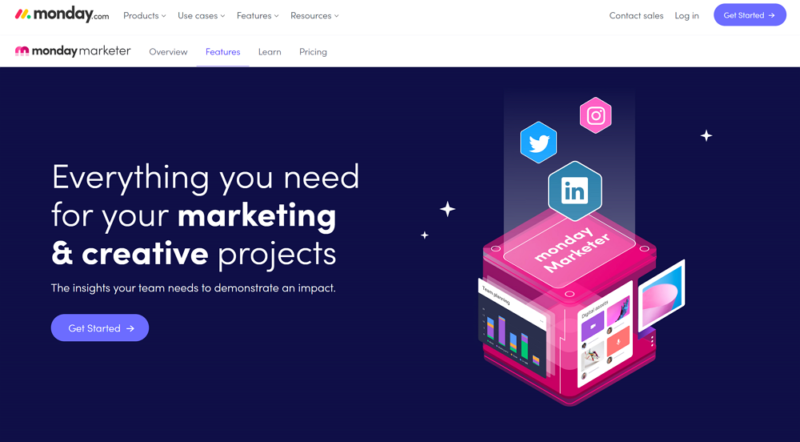
plans also provide lots of scope for bigger design teams.
The platform has recently introduced several new features, such as AI-powered tools that can extract and organize key data from PDFs, images and Microsoft Office files, converting unstructured data into actionable insights. Designers can also use AI to generate project plans, identify potential risks across projects and categorize incoming design requests automatically.
With the new Sequences feature, design teams can create automated follow-up workflows for client communication. This allows designers to set up automated email sequences and task reminders that trigger based on client interactions, ensuring that no client feedback or approval request falls through the cracks.
The platform also integrates Zoom recordings and transcripts directly into project timelines, with AI-powered summaries that highlight key takeaways and action items from client meetings. This keeps all team members updated on client requirements and feedback without having to attend every meeting.
Furthermore, design teams can now generate custom quotes and invoices directly from their project boards, streamlining financial documentation. This feature allows designers to create, manage and track financial documents using data already stored in their project management system, eliminating the need to recreate information in separate billing software.
- Maximum users: 2
- Minimum users: 3; All prices per user
- Minimum users: 3; All prices per user
More plans
- Minimum users: 3; All prices per user
- Enterprise-level features.
If you’re a small-scale designer working in a limited team of just two members, monday.com’s free plan might work great for you. It has a limit of three boards, a cap of 1,000 tasks and grants its free users access to the list and kanban views for management.
However, monday.com is worth scaling to the paid plans if you have more extensive design projects planned that require unlimited tasks and automations. Either way, you can give the platform’s 14-day free trial a whirl. Read our monday.com review to learn more.
2. Hive
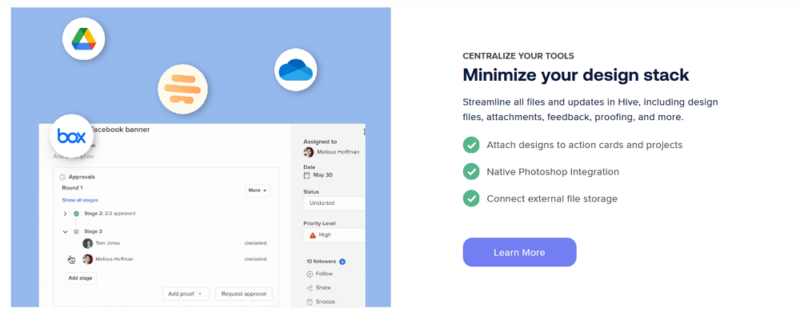
More details about Hive:
- Pricing: Free plan available for up to 2 users; Paid plans start at $12 per month (one-year plan)
- Provider website: hive.com
Pros:
- Easy-to-use tools
- Custom template library
- Excellent teaching materials
Cons:
- Expensive add-ons
- Laggy desktop application
Hive is an excellent alternative for designers looking for a feature-packed free plan. Its design and interface is pleasing and quite easy to navigate. It also offers a one-stop solution for complex processes by simplifying workflows.
Designers and project managers could make use of Hive’s form builder, which allows users to build and design various types of forms. You can also automate workflows, like generating subtasks and assigning tasks to users. Hive Notes enables teams to share ideas together and plan future projects and initiatives, too.
The Solo plan for Hive has a native messaging system to interact with other users and a built-in email client that you can connect to a Google or Microsoft account. If you want access to integrations, you’ll have to upgrade to the paid plans which offer up to five integrations (Jira, Salesforce, Zapier, Slack and Zoom.)
We all know how important the approval process is when it comes to designing. Hive makes it easy through its proofing and approvals tool, for seamless feedback on your project designs. It also allows for multi-stage designers to leave comments and annotations, and get approvals from both internal and external users.
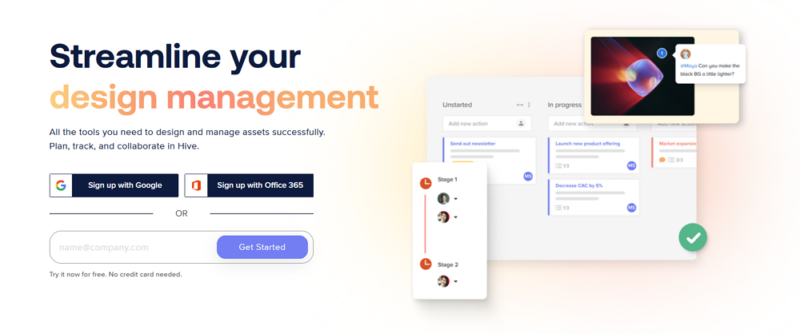
Hive’s free plan works best for individuals and two-person teams with power-packed features like Gantt charts and kanban boards On the Solo plan, you also get access to calendar and table views. However, if you want access to native and third-party integrations, you should opt for the paid plan. You can give Hive a try for 14 days, using its free trial. Check out our Hive review for more details.
- Max 2 users; 200MB storage; Up to 10 users; Unlimited tasks; Unlimited collaborative notes; Gantt, Kanban, calendar & table views; Email in Hive; Desktop, iOS and Android apps; Native chat messaging; Custom emojis
- Everything in Free plus: Unlimited storage Upload files on a task or project. Up to 10 workspace members Add up to 10 full access users into your Hive workspace Up to 10 projects Create up to 10 projects Gantt view View your projects by task timeline and dependency. Cloud storage integrations In-app calendar Zoom and Slack from Hive AI Assistant
- Price per user; Everything in “Free”; Unlimited files & storage; Unlimited workspace members; Workspace add-ons; External guest access; Shareable forms; Time tracking; In-app calendar; Cloud storage integrations; Zoom and Slack from Hive
- Everything in Teams; Flexible add-ons included; Enhanced security and permission controls; Custom analytics and reporting; Unlimited onboarding; Dedicated Customer Success Manager; Enterprise API; Access to Professional Services
3. Wrike
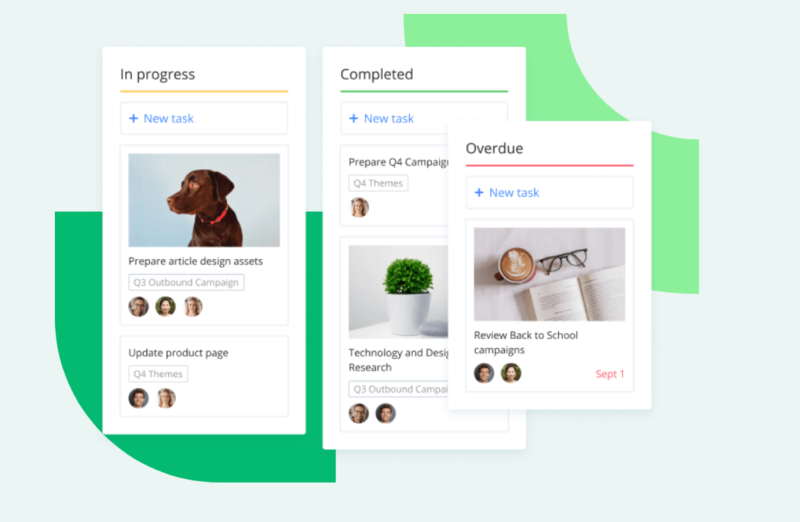
More details about Wrike:
- Pricing: Free plan with 2GB storage per account; Professional plan at $10 per month (one-month plan)
- Provider website: wrike.com
Pros:
- Top-notch security
- Generous free plan
- Organized automation features
Cons:
- Lacks in-depth tutorials
- Steep difference between paid plans
With Wrike, you get a direct overview of all the stages of your design project. You can easily locate relevant attachments for any particular project by creating a designated folder for the same materials. Its easy-to-use interface also lets you rapidly communicate with your team on any new developments in your project.
In addition, Wrike allows teams to create customizable design request forms that capture all necessary project details upfront, ensuring designers have everything they need before starting work.
You can also create custom metadata fields specific to design projects, such as “design status,” “review round,” “brand guidelines version” or “print specifications.” These customizable fields make it easy to filter and sort design assets based on project-specific attributes, giving teams a powerful way to organize complex creative workflows.
Wrike’s intuitive asset management feature allows you to systematically organize and determine the workload and capacity of your team members. You can rearrange and assign new or revision tasks when they come through, allowing for more efficient delegation.
What’s more, Wrike has enhanced its support for Agile methodologies with new sprint performance metrics. Design teams can now track velocity over multiple sprints and evaluate the ratio of planned vs unplanned tasks, helping to improve sprint planning accuracy and identify areas for workflow improvement.
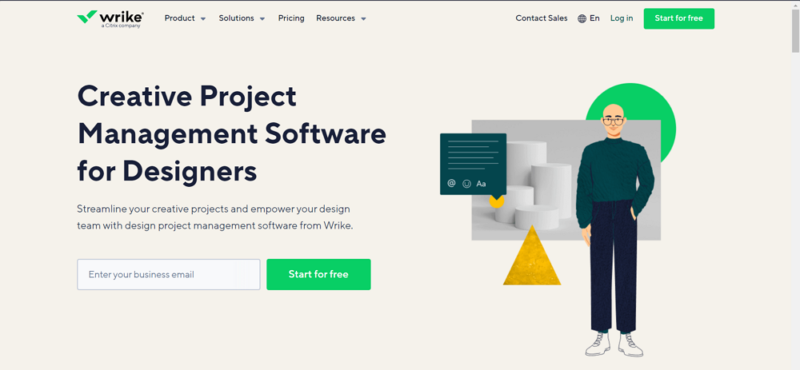
workflow templates that Wrike offers.
Wrike’s free plan is a decent package for newbie designers, with a cap of 200 active tasks and 2GB storage. The paid plans are a bit costly, but you can lower the price by purchasing tools that best suit your needs à la carte. Read our Wrike review to know more.
With Wrike’s paid plans, you can conveniently customize your workspace to ensure quick accessibility and responsiveness for the needs of your team. You also have the ability to compare versions and changes, and track edits and suggestions in one place to optimize the skills of your team and simultaneously generate reports to track progress.
- Unlimited users. Basic features.
- Price is per user. Plans for 5, 10 and 15 users.
- Price is per user. No monthly option. Plans for 5 to 200 users.
More plans
- For large teams; Enterprise-grade security and scalability; Plans for 5 to an unlimited number of users.
- For teams with complex work needs; Advanced tools and analytics for complex work; 5 to unlimited users
4. Asana
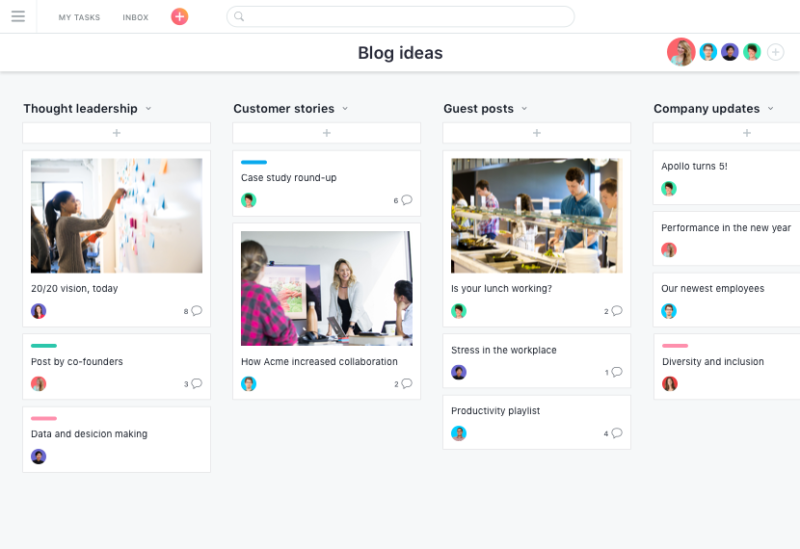
More details about Asana:
- Pricing: Lifetime free plan for 15 members; Premium plan starts at $10.99 per month (one-year plan)
- Provider website: asana.com
Pros:
- Generous free plan
- User-friendly
- Versatile views
Cons:
- No customer support
- Pricey
Asana helps you stay on top of every step throughout any creative project. As a creative project management platform, Asana focuses more on the task side of things. You can analyze the workflow of your deliverables and assign tasks based on the availability of resources to ensure on-time delivery.
What Asana lacks in customer support is made up for by its user-friendly interface. You can view your project stats in a hierarchical chart covering every aspect of the entire project and individual tasks. It’s also one of the best web project management software, alongside monday.com and ClickUp.
With Asana’s real-time tracking feature, you can get updates and make tweaks on the go. You can keep your team looped in on the constant requirement changes laid out by your client. This feature is also best suited for designers charging by the hour, as it can track billables directly from the app.
Furthermore, the platform has introduced AI features to help design teams save time on routine tasks. While not as extensive as some competitors, these tools can help summarize lengthy project descriptions, generate task lists from project briefs and suggest next steps based on your team’s workflow patterns.
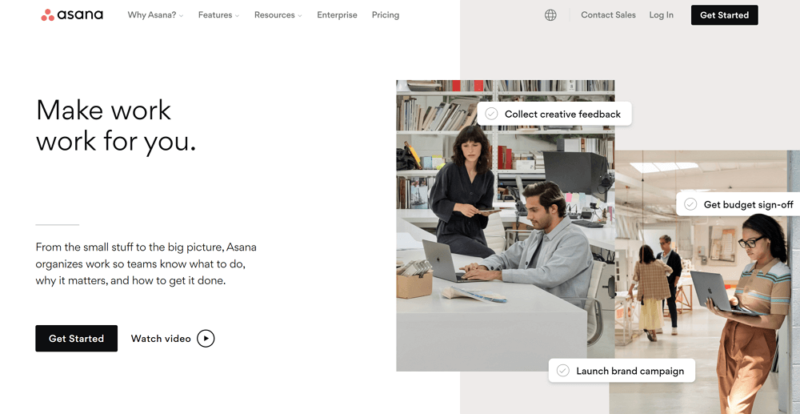
deciding to upgrade to the paid plans.
Asana’s full feature set is free for up to 15 users. If you want to operate at a higher level by integrating external tools, try out one of their paid versions. You can read our review to learn more about Asana.
- Up to 10 users
- Price is per user. unlimited users, expanded features
- Price is per user. unlimited users, even more features
- Custom pricing, advanced security features
5. Basecamp
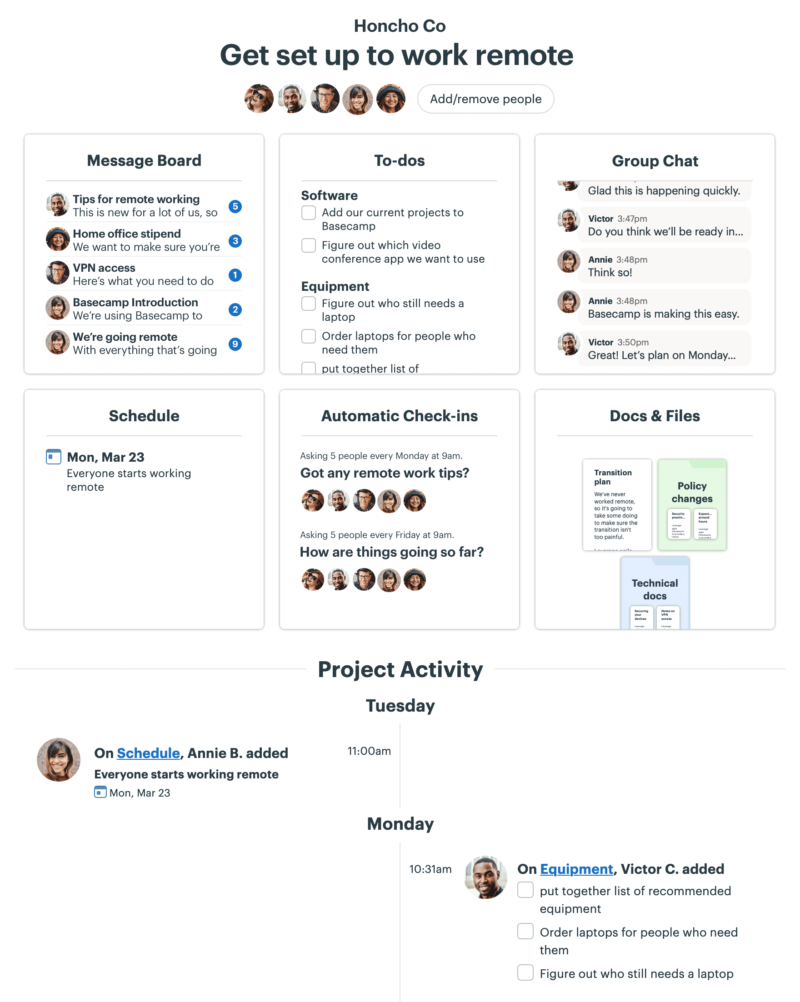
Basecamp could be a good fit.
More details about Basecamp:
- Pricing: Free trial available; $15 per month (one-month plan)
- Provider website: basecamp.com
Pros:
- Bird’s-eye view of projects
- All-in-one paid plan
- Progressive communication
Cons:
- Complex UI
- Feature limitations on project management
Basecamp allows you to methodically organize communication categories into the following six categories: message board, to-do list, group chat, schedule, automatic check-ins and doc & files.
With rapid commercial digitization and remote working, you can use Basecamp communication tools to effectively update ongoing changes and manage your design projects by avoiding unnecessary communication gaps. However, Basecamp offers only the basic calendar views and to-do lists; Gantt charts and kanban boards are not available.
Though Basecamp lacks kanban boards, it offers excellent brand asset management capabilities that allow design teams to organize and access logos, color palettes and brand guidelines across projects.
Irrespective of where your team is working from, Basecamp allows real-time communication that lets your design team (including remote designers) stay in the loop and ensure that no crucial information is missed.
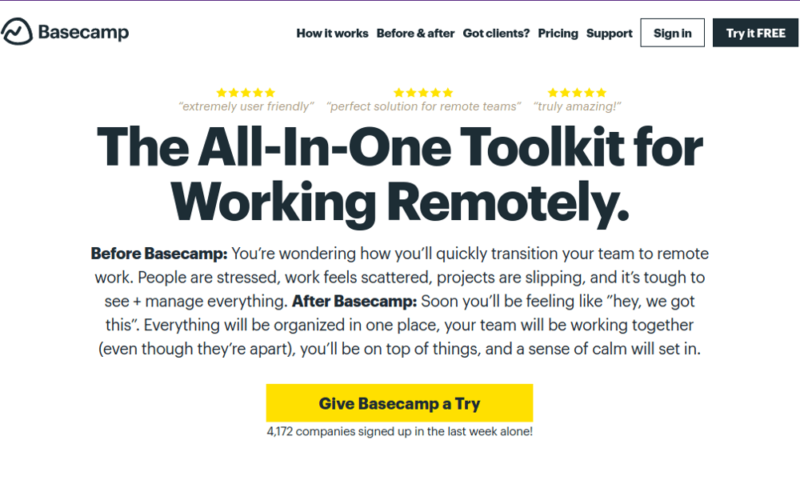
than a project management application.
Basecamp has recently updated its pricing model. Now, it offers a flat rate pricing of $15 per user, which unlocks all of its features. Its former free plan called Basecamp Personal is no longer available. The good news is that Basecamp is currently running an offer of a limited time sign-up until the end of the year, offering three free user seats for a one-year duration.
Basecamp provides a 30-day free trial, which includes up to 1GB and 20 users. However, if you decide to pay up front for a year, you’ll get a 15% discount on Basecamp Business with no limit on the number of users.
- Per user. Unlimited projects, Unlimited users, All features. 500GB storage.
- Unlimited users. 5TB storage. Priority support.
6. ProofHub
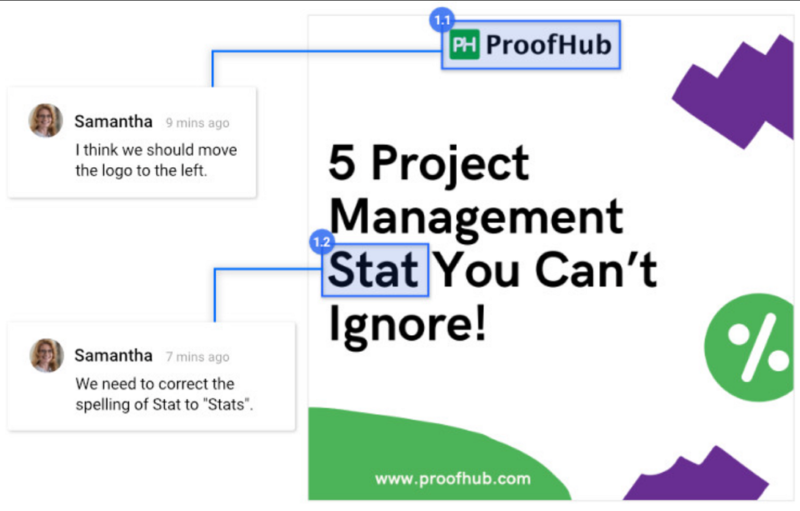
allows you to manage the entire lifecycle of your project.
More details about ProofHub:
- Pricing: Free trial available; paid plans starting at $45 per month (one-year plan)
- Provider website: proofhub.com
Pros:
- Affordable pricing
- Easy to use
- Robust file-sharing options
Cons:
- Limited integrations
- Minor interface problems
ProofHub excels at structuring formal design approval workflows with customizable stages that guide designs from initial concept through stakeholder feedback to final client approval.
With ProofHub, you can create an entire workflow from addressing design requests and allocating tasks to team members to delivering to clients. It also has its own reporting tools that helps project managers with client reporting, and allows you to manage multiple projects at one go as it’s easy to assign due dates, track progress and manage tasks.
ProofHub even allows users to create multiple teams within organizations so that different users can work on specific modules of ProofHub simultaneously. However, it currently offers limited integrations with other applications.
Users can upload files directly into the system and track versions being uploaded. This feature is especially useful for designers who have to continuously send design files back and forth while they’re working on revisions.
It also has a permission-based file sharing feature that allows users to grant approvals for specific files. Users can annotate and proof files for feedback using the integrated markup tools in specific sections, enabling reviewers to draw, highlight and annotate directly on design files. This makes the feedback clear and actionable for designers.
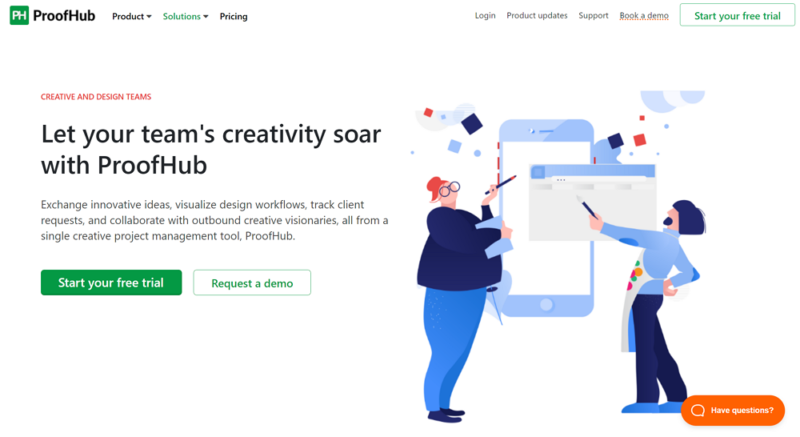
ProofHub’s payment plans are a little unique, as the platform charges a flat rate for entire design teams instead of charging per head or per user. There is no free plan available, but you can give their 30-day free trial a whirl before committing to a subscription. Learn more about ProofHub in our review.
- 40 projects, Unlimited users, 15GB storage
- Unlimited projects, Unlimited Users, 100GB storage, Advanced features
7. Trello
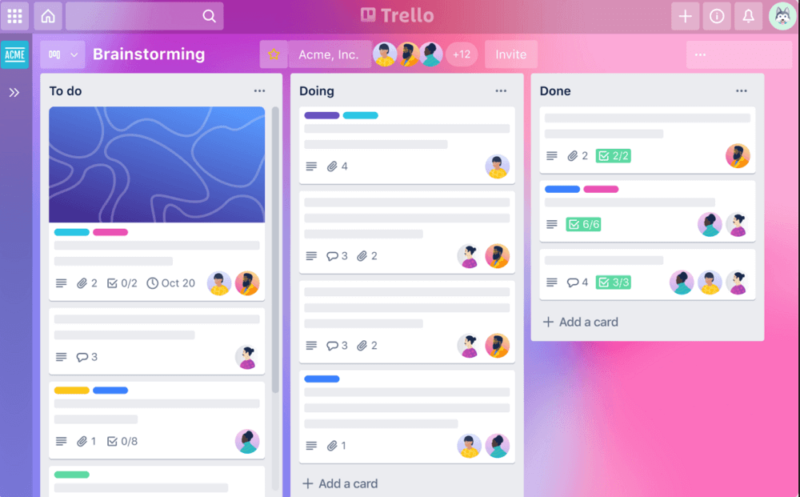
More details about Trello:
- Pricing: Free plan available with a file-size cap of 10MB; Standard plan at $5 per month (one-year plan)
- Provider website: trello.com
Pros:
- Best kanban board tool
- Impressive free plan
- User-friendly
Cons:
- Heavily reliant on integrations
- UI could be improved
Trello is an excellent choice for design teams because it provides an intuitive and visual interface for collaborating on projects. By creating boards to organize your tasks, you can easily see the status of each project, who’s working on what and what the next step is in the process.
The platform makes it easy to prioritize tasks by combining to-do lists with a drag-and-drop interface. You can also assign small details like color-coding different cards, setting due dates and using checklists to make sure nothing falls through the cracks. You can keep records of conversations, which is useful for reference later if you need to explain why a decision was made.
The only drawback with Trello is that it relies heavily on kanban boards, leaving other project management areas dependent on third-party tools.
By adding due dates to your tasks and moving them across the timeline as they are accomplished, you can easily visualize the progress of your project at any given moment. Design teams can also make use of Trello’s views and preloaded templates like “design sprint” and “design huddle.” These features help teams structure their rapid ideation and prototyping phases, making it perfect for UX/UI designers following agile methodologies.
Trello has also improved its organizational capabilities with an additional layer of folders that allow design teams to create a second level of hierarchy for better project organization. This enables teams to manage multiple design projects and client work within a single Trello workspace.
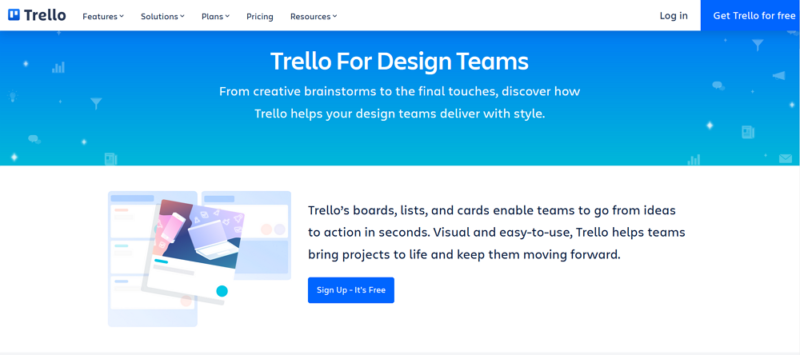
track of their design projects and progress in one place.
Trello’s kanban board–focused design offers you unlimited file storage, with a limit of 10MB per file. Third-party integrations can also be added with the free plan. However, the Standard and Premium plans raise the workspace command numbers and file-size cap, making it great for medium to large teams.
You can use the 14-day free trial to make use of all its advanced features to see if this design management software is for your team. Check our in depth Trello review for more insight.
- Unlimited users, 10 boards, Unlimited power-ups, Unlimited storage
- Price is per user, Unlimited boards, Custom fields, Invite guests
- Price is per user, Several new views
- Price is per user, Advanced admin & security settings
8. Notion
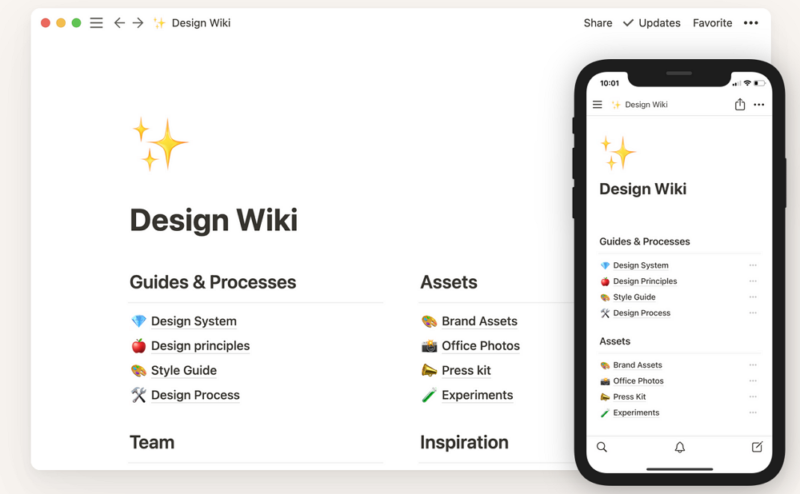
More details about Notion:
- Pricing: Free plan available; paid plans starting at $10 per month (one-year plan)
- Provider website: notion.so
Pros:
- Ideal for graphic designers
- Note-taking is very good
- Affordable pricing
Cons:
- Tracking multiple projects is difficult
- No task & PM features
Notion is easy to learn, and can be used by a team of people working together in the same space or a team of people working remotely. The interface is very streamlined and simple. You can drag and drop sections to rearrange them and move pages around to organize your thoughts.
Notion works as a documentation system that transforms notes into clear action. For design teams, it can increase transparency, effective collaboration and consistent quality through its centralized documentation process.
In a way, it’s a wiki for designers, as everything relevant to a particular project is housed within a single place. You can also split the same information in several ways to view projects by designer or in chronological order of what’s launching this week, for example.
Notion’s visual collaboration features make it ideal for design teams to create mood boards, wireframes and other visual planning documents that everyone can contribute to in real-time.
The platform even allows users to export documents as PDFs with preserved formatting and layout, making it easier for designers to share project documentation, design briefs and creative guidelines with clients in a professional format. Users can preview and customize the export with formatting options and page breaks.
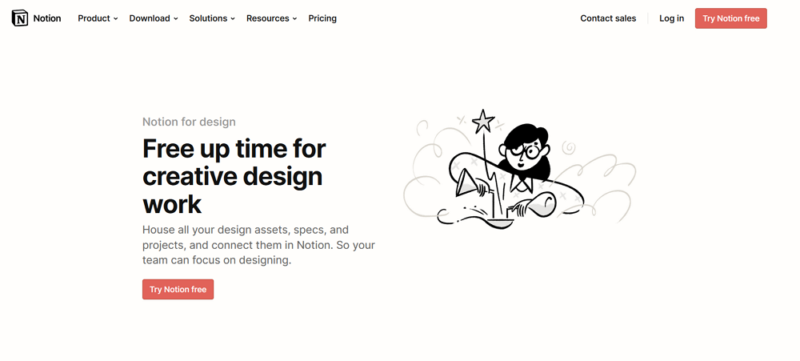
with more features and unlimited users.
All features of Notion are available in the free plan, making it a great choice for individuals and freelancers. Paid plans improve on this by removing the user limit, making an ideal project management software for medium- to large-sized design agencies. Read our full guide to learn more about the Notion pros and cons.
- 1 user only, Up to five guests, 5MB file upload limit
- 1 user only, Unlimited guests, Unlimited file uploads, Version history
- Unlimited users, Unlocks workspace, User permission settings
- Advanced security features
Final Thoughts
Now that we’ve dissected the main features of the most popular project management software options for designers, you should have a good idea which one is right for you. Look for platforms that offer effective resource planning capabilities that allow design teams to allocate appropriate time and talent to projects, preventing both overallocation and underutilization of creative resources.
If you’re still struggling to decide, it may help to know that simple project management services with lower overall prices are typically used in newer technological industries, such as graphic design, while older industries like construction and engineering tend to make heavier use of more sophisticated premium packages. Thus, it may be a good idea to choose your software based on the specific type of design you specialize in. These findings are part of a study published in the IEEE Transactions on Engineering Management Journal.
If you’re looking for a simple way to organize your workflow or if you need a system that’s flexible enough to accommodate your company’s unique needs, monday.com, Asana or Trello may be perfect for you. For design agencies and freelancers billing by the hour, tools like monday.com and Asana offer profitability tracking to ensure that design projects remain financially viable while meeting creative standards.
These are the best project management software for Windows and project management software for Mac. Regardless of your go-to operating system, they will work just fine. If staying focused on communication is important to you, and if you need to focus on Agile delivery, a combination of Basecamp and Notion may work better.
If you’re finding it difficult to prioritize critical projects and can’t decide which ones to put on the back burner, pick monday.com — our best project portfolio management software.
Either way, it’s clear that there are many ways to get things done through the use of software. We encourage you to leave a comment below with your favorites. What program do you use? Are there any that we didn’t mention? Until then, happy designing!
FAQ
Project management is a methodology for project planning, scheduling and managing complex projects. In other words, it’s a system for keeping track of what needs to happen and when it needs to happen — and making sure that everything gets done by the deadline.
monday.com is our top recommendation for designers looking to manage their projects and client work. It has a wide range of use cases for designers managing a variety of projects.
Designers often use project management software to create plans for their projects. This software allows them to accurately estimate time and cost for each project, manage multiple teams by giving each member an overview of the entire project at once and communicate with clients directly.



